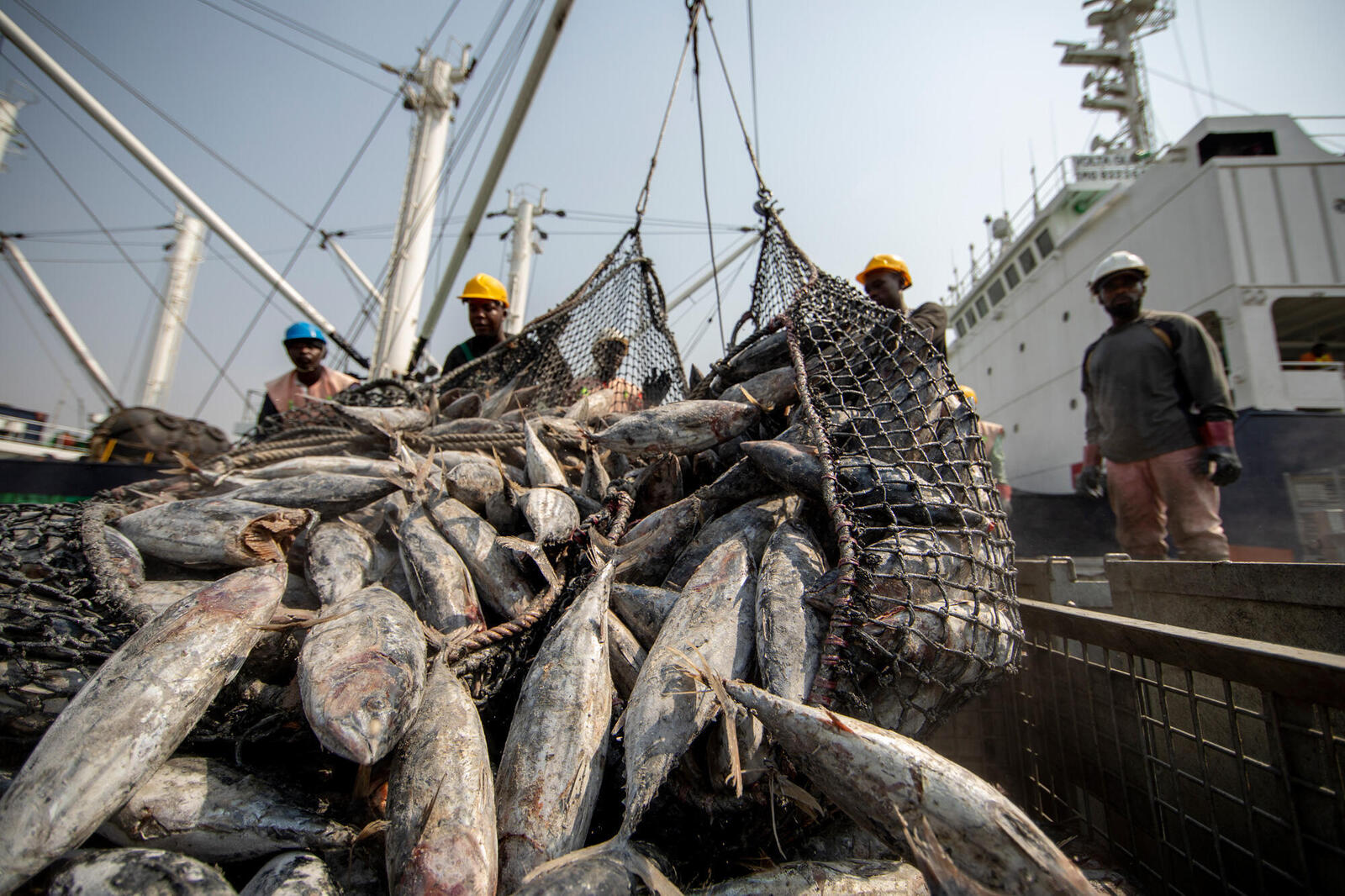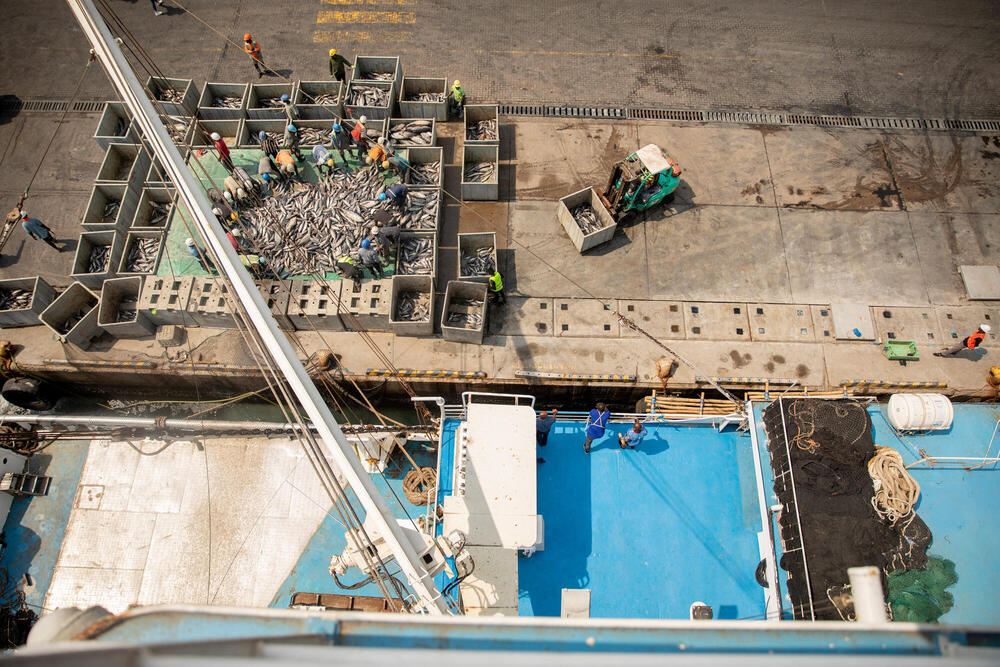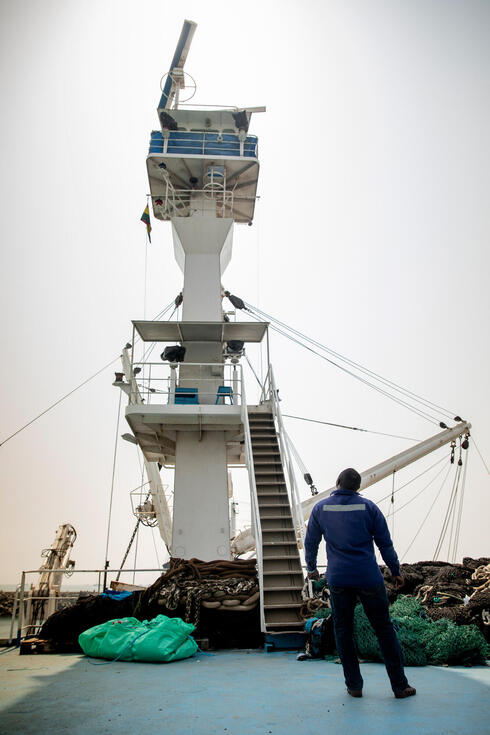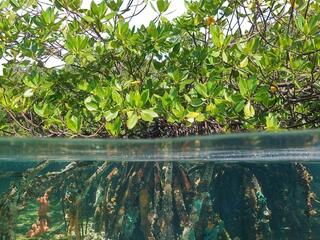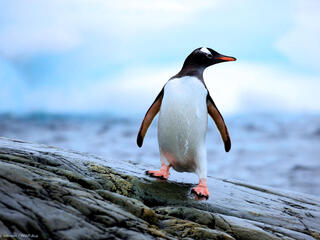It’s late afternoon, and the curtains are drawn together in a cramped office at the Ministry of Fisheries and Aquaculture Development, a 10-minute drive from the port. Three large desks line the perimeter, each topped by a pair of monitors. White noise emanates from a wall unit forcing cold air into the room to protect the technology from the corrosive trifecta of heat, humidity, and dust.
Agyeman Narkie Akua, a 28-year-old biologist who lives just outside Tema, spends her entire day watching people fish on those monitors. The pilot project equipped all 14 of Ghana’s active purse-seine tuna vessels with monitoring technology and trained analysts like Akua to operate the systems that analyze the collected data.
“I’m looking at the entire trip, from when the vessel left the port to when it got back to port to offload its carriage,” she says. She is precise in recounting the details of her daily routine.
An electronic monitoring system installed on a fishing vessel is a mostly tamper-resistant network of cameras in protective cases—like the one bolted to the mast on the Cap Saint Paul— along with position-tracking technology and hard drives that store all of the encrypted data. The system gets a clearer picture than a lone pair of eyes are able to catch in the moment, and when the crew gets back to port, an analyst can review a month of fishing in about a week. And it’s all saved digitally.
“Every activity is accounted for,” Akua says confidently.
Not incidentally, Akua’s unit is largely made up of women, actively recruited and hired to balance the scales in a national industry where fishing crew and onboard observers are, by law and ostensibly for safety reasons, exclusively men. In the final year of the pilot project, women analyzed three out of four trips.
By the end of the pilot, the unit had reviewed more than 150 fishing trips, using the electronic monitoring system to provide the government and scientists with the clearest picture yet of Ghana’s tuna fleet.
“It’s a marvelous tool for ensuring transparency,” says Spurrier.
